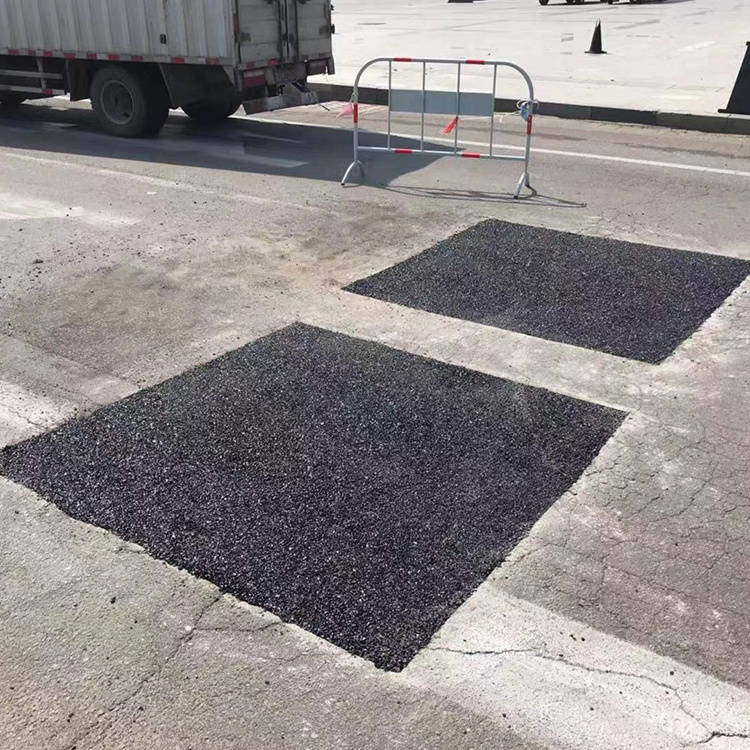What Is Cold Patch Asphalt? A guide to help you understand it
If you are dealing with potholes, cracks, or other forms of asphalt damage, you may have encountered the term patch asphalt. But what exactly is it? When should you use it? Is it a viable solution for long-term repairs?
In this post, we will explain everything you need to know about cold patch asphalt—from its functionality to how it compares with other asphalt repair options. Whether you are a homeowner or a contractor, this guide will assist you in making the right choice.
What Is It?
Cold patch asphalt is a pre-mixed asphalt repair material that can be used directly from the bag or bucket—no heating required. It is designed for quick and easy repairs of potholes, cracks, and damaged pavement. This material can be applied even in cold or wet weather, making it a popular choice for year-round maintenance.
Key Benefits of Cold Patch Asphalt
Here are the main advantages of using cold patch asphalt:
| Benefit | Explanation |
|---|---|
| No Heating Needed | Unlike hot mix asphalt, cold patch can be applied cold—no special equipment. |
| Easy to Use | Open the bag, pour it in the hole, tamp it down. That’s it. |
| Works in Any Weather | Rain, snow, or sun—you can still make a repair. |
| Fast Repairs | Most jobs take only minutes, perfect for driveways or parking lots. |
| Cost-Effective | Good choice for small or temporary repairs. |
How Much Does It Cost?
Cold patch asphalt is usually sold by the bag (typically 50 lbs). Here are average prices:
- Per 50-lb bag: $15–$25
- Per ton (bulk orders): $120–$200
You can find it at Home Depot, Lowe’s, Menards, Amazon, or local hardware stores.
Tip: For a standard pothole about 1 ft x 1 ft x 2 inches deep, you’ll need roughly one 50-lb bag.
When Should You Use it?
Cold patch asphalt is best for quick fixes and small areas. It’s ideal for:
- Driveway potholes
- Parking lot repairs
- Walkways or paths
- Utility cuts
- Emergency winter repairs

It’s not recommended for full resurfacing or large commercial paving projects.
Cold Patch Asphalt vs. Other Asphalt Repair Options
Let’s compare cold patch asphalt with other common materials:
| Material | Heat Required | Durability | Ease of Use | Cost | Weather Flexibility |
|---|---|---|---|---|---|
| Cold Patch Asphalt | No | Fair | Easy | Low | All weather |
| Hot Mix | Yes | Excellent | Needs tools | Medium/High | Requires dry, warm weather |
| Infrared Repair | Yes | Excellent | Professional only | High | Weather-sensitive |
| Crack Filler | Varies | Good | Easy | Low | Flexible |
In short: It is the best option for small, DIY jobs or temporary fixes. For permanent or large-scale work, consider hiring a contractor and using hot mix.
How to Apply It (Simple Steps)
- Clean the Area: Remove any loose debris, water, and dirt.
- Pour the Cold Patch: Fill the hole in layers no thicker than 2 inches at a time.
- Tamp It Down: Use a hand tamper or drive over it slowly with a car tire.
- Let It Settle: Cold patch may take several days to fully harden.
Tip: For optimal results, slightly overfill the hole and compact the material firmly.
Popular Cold Patch Asphalt Brands in the U.S.
- QPR (Quality Pavement Repair) – Very common, found at Lowe’s and Home Depot.
- Sakrete U.S. Cold Patch – Eco-friendly and easy to use.
- Aquaphalt – Higher-end, water-activated cold mix (more expensive, more durable).
- Road Rescue – Lightweight and good for residential repairs.
Each brand has slight differences in curing time, texture, and longevity.
Is It Permanent?
Not always. Cold patch asphalt is not always a long-term solution, it is specifically designed for temporary or emergency repairs. In low-traffic areas, such as residential driveways, it can last for 1 to 2 years or even longer. However, in high-traffic or commercial areas, it may deteriorate more rapidly.
To increase lifespan:
- Compact it well
- Seal the area after curing
- Reapply when cracks appear
Final Thoughts
Cold patch asphalt is an excellent solution for quick and cost-effective asphalt repairs. It is easy to use, effective in all weather conditions, and readily available. Although it may not provide a permanent fix, it serves as a temporary solution that ensures the safety of both pedestrians and vehicles until a more durable repair can be implemented. If you have a pothole and a free afternoon, cold patch asphalt may be all you need.

